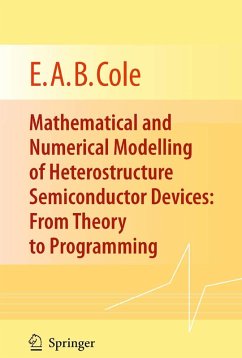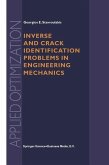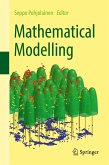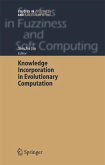The commercial development of novel semiconductor devices requires that their properties be examined as thoroughly and rapidly as possible. These properties are investigated by obtaining numerical solutions of the highly nonlinear coupled set of equations which govern their behaviour. In particular, the existence of interfaces between different material layers in heterostructures means that quantum solutions must be found in the quantum wells which are formed at these interfaces.
This book presents some of the mathematical and numerical techniques associated with the investigation. It begins with introductions to quantum and statistical mechanics. Later chapters then cover finite differences; multigrids; upwinding techniques; simulated annealing; mesh generation; and the reading of computer code in C++; these chapters are self-contained, and do not rely on the reader having met these topics before. The author explains how the methods can be adapted to the specific needs of device modelling, the advantages and disadvantages of each method, the pitfalls to avoid, and practical hints and tips for successful implementation. Sections of computer code are included to illustrate the methods used.
Written for anyone who is interested in learning about, or refreshing their knowledge of, some of the basic mathematical and numerical methods involved in device modelling, this book is suitable for advanced undergraduate and graduate students, lecturers and researchers working in the fields of electrical engineering and semiconductor device physics, and for students of other mathematical and physical disciplines starting out in device modelling.
This book presents some of the mathematical and numerical techniques associated with the investigation. It begins with introductions to quantum and statistical mechanics. Later chapters then cover finite differences; multigrids; upwinding techniques; simulated annealing; mesh generation; and the reading of computer code in C++; these chapters are self-contained, and do not rely on the reader having met these topics before. The author explains how the methods can be adapted to the specific needs of device modelling, the advantages and disadvantages of each method, the pitfalls to avoid, and practical hints and tips for successful implementation. Sections of computer code are included to illustrate the methods used.
Written for anyone who is interested in learning about, or refreshing their knowledge of, some of the basic mathematical and numerical methods involved in device modelling, this book is suitable for advanced undergraduate and graduate students, lecturers and researchers working in the fields of electrical engineering and semiconductor device physics, and for students of other mathematical and physical disciplines starting out in device modelling.
Dieser Download kann aus rechtlichen Gründen nur mit Rechnungsadresse in A, B, BG, CY, CZ, D, DK, EW, E, FIN, F, GR, HR, H, IRL, I, LT, L, LR, M, NL, PL, P, R, S, SLO, SK ausgeliefert werden.
From the reviews:
"The book covers a wide spectrum of topics that are fundamental for modelling and simulation of semiconductor electron devices ... . It is addressed to undergraduate and graduate students in mathematics and electrical engineering as well as researchers who would like to get different perspectives on the subject. ... The monograph is self-contained since a standard background in calculus is enough to read it. This is surely a good textbook for Ph.D. students in applied mathematics." (Vittorio Romano, Mathematical Reviews, Issue 2011 e)
"This well-written book involves the basic physical theory of semiconductor device modelling and the numerical methods to solve the corresponding equations. ... Problems are formulated to improve the skill of the reader ... . In order to support the reader, in the implementation of the methods, some simple codes written in C++ are included. ... A great advantage of this monograph consists in the presentation of the whole cycle of semiconductor device modelling ... ." (Georg Hebermehl, Zentralblatt MATH, Vol. 1252, 2012)
"The book covers a wide spectrum of topics that are fundamental for modelling and simulation of semiconductor electron devices ... . It is addressed to undergraduate and graduate students in mathematics and electrical engineering as well as researchers who would like to get different perspectives on the subject. ... The monograph is self-contained since a standard background in calculus is enough to read it. This is surely a good textbook for Ph.D. students in applied mathematics." (Vittorio Romano, Mathematical Reviews, Issue 2011 e)
"This well-written book involves the basic physical theory of semiconductor device modelling and the numerical methods to solve the corresponding equations. ... Problems are formulated to improve the skill of the reader ... . In order to support the reader, in the implementation of the methods, some simple codes written in C++ are included. ... A great advantage of this monograph consists in the presentation of the whole cycle of semiconductor device modelling ... ." (Georg Hebermehl, Zentralblatt MATH, Vol. 1252, 2012)









